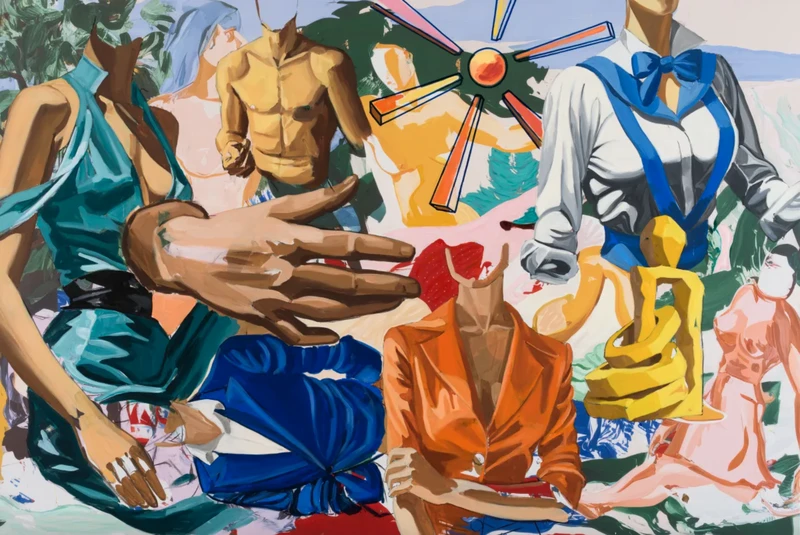David Salle: Some Versions of Pastoral
10 Apr-8 Jun 2025


I've always had a desire to scramble the visual world into a vortex, to kind of desolidify painted reality into something that has the fluidity and velocity of a great abstract painting. — David Salle
Thaddaeus Ropac London is pleased to present Some Versions of Pastoral, the first UK exhibition of David Salle’s latest body of work, the New Pastorals, and the artist’s first solo exhibition at the London gallery. The paintings are the product of a significant recent innovation in Salle’s art: his use of artificial intelligence as a tool to create more spatially dynamic and conceptually rich compositions than ever before. ‘I have long dreamed of a truly malleable, elastic pictorial space,’ Salle says.
Over his career, David Salle has taken as his subject imagery from a wide range of sources, including magazines, advertisements, art history and cartoons. Though his subject matter is ostensibly figurative, Salle’s paintings locate the imagery in pure formal play and an all-over composition that is deeply rooted in Abstract Expressionism – what the artist describes as a ‘sensation of neither beginning nor ending […] a kind of circuitous freefall through the universe.’ In these new paintings, the artist uses his own oeuvre – specifically, a group of paintings titled the Pastorals, executed in 1999 and 2000 – as raw material. Fed into a custom-made AI programme, the works are deliberately distorted to produce a variation on the pastoral scene. These freewheeling, sometimes bewildering images are then printed onto canvas to form the backdrops on which Salle paints. The result is a lyrical body of work that teems with new freedom and plasticity, and seems to respond to our viral visual world.
In each painting, a miscellany of objects and anatomies converge on a single plane, where laws of gravity, space and perspective dissipate, and visual drama holds dominion. Salle renders some motifs with a masterful degree of virtuosity, while others are left unfinished and tapering. Plaid skirts are like threadbare nets, cast wide over a sea of swarming images, and shapes fail to cohere into anything except themselves: they emerge, only to slip back into the glitching, painterly abyss from which they surfaced.
Painting is a technology in its own right, one that, as the history of art attests, has advanced over millennia through relentless modification and reinvention. For Salle, it is incumbent on the artist to make use of the tools available in their time, whether egg tempera, oil paint or photography. AI is useful ‘since it doesn’t know what it’s doing,’ he says. ‘It can violate all the rules of depiction and have no guilty conscience about it.’ Like the human eye, it rapidly scans, processes and distils an endless stream of visual information. So with the help of software engineer Grant Davis, Salle ‘sent the machine to art school,’ training his model on select works by artists including Edward Hopper, Giorgio de Chirico and Arthur Dove to impart basic principles of line, edge, composition and form. Salle then refined this dialogue, restricting the model’s dataset to a ‘very specific diet’ of his earlier Pastorals. Avoiding the pitfalls of ‘generic’ digital imagery, the result is a highly concentrated visual vocabulary, which is enriched and intensified by further layers of overpainting. In concert with the reverberations of his past pictorial invention, Salle stages what curator Nancy Spector describes as a ‘duet for one.’